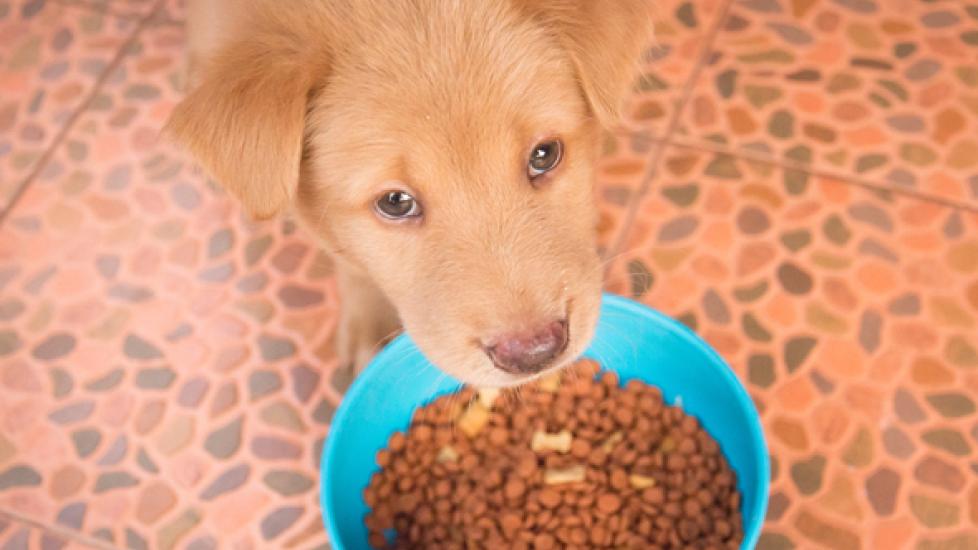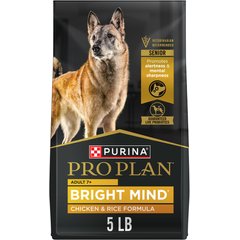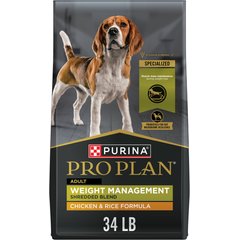Age-Appropriate Food for Pets: Why It's Important
By Mindy Cohan, VMD
When it comes to choosing an appropriate diet for your pet, it is important to consider your pet’s age, body condition, medical problems and even breed. It is also important to be sure your pet’s food includes a statement from the Association of American Feed Control Officials (AAFCO), which indicates that the diet has either been tested via food trials or has been analyzed to meet nutritional guidelines.
Here, learn more about what to feed your pet throughout his or her life and find out why products labeled “all life stages” might not be the most appropriate option.
Feeding a Species and Life Stage-Appropriate Diet
One of the most important feeding fundamentals for pet parents to understand is that dogs and cats do not have the same nutritional requirements. Cats are considered strict carnivores while dogs are classified as omnivores. While it is not ideal, dogs can receive adequate nutrition on a feline diet, but cats must never be fed dog food. Although adult dogs and cats will intake sufficient nutrients if fed a growth formula (food specifically formulated for growing pets), puppies and kittens should not be fed adult diets while still developing. The greatest concern associated with adult dogs and cats consuming moderate amounts of a growth formula is the propensity to gain weight.
Pet parents with dogs and cats in various age ranges might be tempted to choose a single food labeled for “all life stages.” These diets are particularly appealing when it is difficult to separate pets and feed them individually. Feeding a diet deemed appropriate for “all life stages” may be fine for some households, however, for pets with specific nutrient requirements, or pets that gain weight on an “all life stage” diet, it is best to feed individual foods and keep pets separated during feeding times.
Vet Recommended Dog Food
- Eukanuba Premium Performance Puppy Pro Dry Dog Food, 4-lb bag$25.99Chewy Price
- Purina Pro Plan Bright Mind Adult 7+ Chicken & Rice Formula Dry Dog Food, 5-lb bag$24.68Chewy Price
- Purina Pro Plan Adult Weight Management Shredded Blend Chicken & Rice Formula Dry Dog Food, 34-lb bag$77.48Chewy Price
- Hill's Science Diet Adult Lamb Meal & Brown Rice Recipe Dry Dog Food, 33-lb bag$83.99Chewy Price
What to Feed a Puppy or Kitten
Because of their rapid growth rate, puppies and kittens possess calorie requirements that exceed those for adult or mature pets. For this reason, it is important to feed developing puppies and kittens diets labeled for growth. There is a general consensus amongst veterinarians which recommends feeding a puppy or kitten formulation until the pet has achieved 90 percent of its adult size. Generally, cats’ stature maturity is reached at 10 months, small and medium dogs at 12 months, and large-breed dogs are usually fully-grown by 18 months.
When it comes to large-breed dogs such as Labradors, Golden Retrievers, Rottweilers and Great Danes, nutritional recommendations are different than those for their smaller counterparts. Because large-breed puppies have a genetic propensity for rapid growth, they are prone to skeletal abnormalities. Feeding a diet that is labeled for large-breed puppies is recommended. These diets are formulated to regulate the calories and calcium intake needed to minimize the risk of developmental problems such as hip dysplasia and osteochondrosis, a condition in which there is disruption in the normal maturation of cartilage to bone. The failure to feed a diet formulated for the specific needs of large-breed puppies can result in pain secondary to arthritis and the possible need for corrective surgery.
Feeding an Adult Pet
The majority of commercially-available pet foods are appropriate for young adult dogs and cats. Dogs in the “young adult” category fall in the age range of one to between five and seven years depending on their breed. Cats in this group range from 10 to 12 months to between six and seven years. Young adult pets are typically neutered, which has been shown to slow their metabolism.
Obesity affects more than 50 percent of dogs and cats in the U.S. It is therefore important for your veterinarian to monitor your pet’s weight and body condition and to make diet recommendations and adjustments accordingly. If your young adult pet has an underlying medical problem such as bladder stones, arthritis, allergies or kidney disease, your veterinarian will suggest a specifically-formulated diet to help with these issues.
As pets mature, their dietary needs can change based upon their activity level, overall health and body condition. Mature adult dogs, depending on their breed, fall into the age range of between six and eight years and older. Cats between seven and eight years of age or older are considered mature.
When pets reach this age, many pet parents become interested in feeding diets labeled as “senior.” Since there is no standard for such a label designation, these diets possess caloric and nutrient variability. For example, some companies increase the protein content, while others lower the percentage of protein in their “senior” formulations. Due to the fact that all pets age at different rates and develop individual health issues, consult your primary veterinarian or a veterinary nutritionist before switching your pet to a “senior” diet.
Mature pets can fall at either end of the weight spectrum. Some dogs and cats, as they become less active, are predisposed to weight gain. A weight reduction diet, moderate exercise and limited treats can help to restore your pet’s ideal body condition. On the other hand, some dogs and cats become underweight as they age. Studies suggest that as pets enter their senior years, they are not able to digest protein and fat as readily as they did when younger. As pets age, they are also at risk for weight loss secondary to dental disease and diminished senses of taste and smell. If no underlying condition has been diagnosed to account for weight loss such as diabetes, hyperthyroidism in cats, or cancer, discuss a diet change with your veterinarian.
Pet Feeding Tips to Follow
Some ideas for feeding pets individually include:
- Feed smaller meals two to three times per day rather than free feeding by providing entire day’s portion at one time.
- Place pets in separate rooms at feeding time, giving them 15 to 20 minutes to finish a meal.
- If one cat is young and spry and the other is overweight and unable to jump high, feed the cats on different levels. This will enable the younger cat to eat at an elevation while the less mobile cat consumes its food on ground level.
- If you cannot separate dogs and cats in segregated rooms, disperse food bowls to different ends of the room in which feeding occurs and supervise closely.
Providing an appropriate diet based upon your dog or cat’s age, body condition and medical problems will help to ensure a happy and healthy life.
Not sure if your pet is the right weight? Find out how to measure their body condition score.




